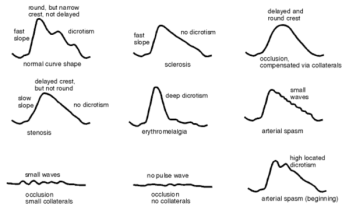Design Team Members: Tim Beyers, Alexis Bose, Bob Mungamuru
Supervisor:Dr. D. W. Stashuk
Introduction
The demographic profile of this continent will be changing over the next two decades. As the baby boomer generation approaches the age of retirement, there will be a shift toward a more mature, aging population. The healthcare industry is particularly affected by this shift. It is crucial for this industry to expand and develop itself, to service the needs of an older generation whose numbers are growing.
An important area within the sphere of healthcare is that of emergency treatment and response services. As the boomers grow older, there will be greater concern over their health, and an increased demand for methods to reliably detect and respond to emergency situations, such as heart attacks, strokes, or physical injuries.
We propose to design a product that addresses this need for improved emergency response systems. A portable system is envisioned, that monitors the vital signs of a user, and automatically alerts the appropriate emergency response services upon the recognition of a crisis situation.
Motivation
Uses of a wearable monitoring device extend to people of all ages who may have serious medical conditions, or recent surgeries, that need to be kept under watch. It may even be used to alert authorities of a motor accident, or of a person lost in the woods suffering of hypothermia. A general-purpose vital sign monitoring system would find applications in many walks of life, and be desired by a large number of consumers.
Several systems do currently exist on the market, which only partially address these needs (e.g., MedicAlertâ, calling 911, or PC-based monitors). However, none of them offer a complete monitoring and notification solution, which is also usable in everyday life. The crucial missing element in such systems is the automatic detection of a crisis situation, without relying on input from the patient, who may be in too much anguish to use such a system. This, in our view, is the main deficiency of the products that exist on the market right now.
The only existing system that truly presents a complete monitoring and notification solution is, in fact, a hospital bed with electrodes and large monitoring devices connected to the patient’s body. This is obviously an unsatisfactory solution because it is suitable only for hospital environments, constrains the user’s mobility to a very small area, and is wholly unusable in everyday life.
Problem statement
In light of the preceding discussion, our problem can succinctly be stated as follows:
We propose to design an appropriately sized, wearable device, which monitors one or more vital signs from the human body. The device will internally process these vital signs and automatically detect clinically significant abnormalities. Upon such detection, the device will wirelessly send an alert to an emergency response team.
Ease of use and non-invasiveness are keys to the utility of this product. Otherwise, the final users of the device would find the solution unacceptable.
Methodology and objectives
The long-term vision of a fully portable, wearable device is not realizable within an eight-month time frame. As such, it is expected that at the end of the allotted time frame, only a functionally scaled-down prototype device will have been constructed.
The first term of this project was allotted to performing research into the various available technologies for the biological signal acquisition and emergency response notification subsystems. The following technologies have been chosen as a result of our research:
Biological sensors
- Photoplethysmography (blood flow, blood pressure, oxygen saturation and heart rate)
- Accelerometer (sudden falls, impacts, removal of noise artifacts)
- Thermistor (skin temperature, environmental conditions)
Photoplethysmography (PPG) is a non-invasive technique for measuring the volumetric flow rate of blood, based on the light absorption properties of blood. Pulse oximetry is a technique for extracting oxygen saturation and heart rate information from a PPG signal. Given below are examples of the types of conditions detectable by analysis of the PPG signal.

(Image sources from www.medis-de.com/en/ipg.html)
Communications
- Trimble Lassen LP Global Positioning System (GPS) (location of distressed patient)
- Research In Motion (RIM) Blackberry (communication of distress signal)